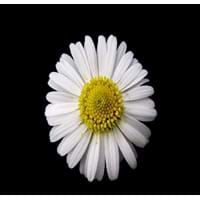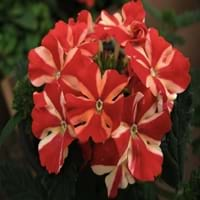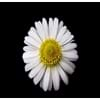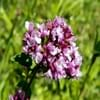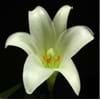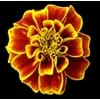Color
Orange, White, Yellow
Blue, Pink, Red, White
Color Meaning
Orange - Satisfaction and Passion, White - Purity and Innocence, Yellow - Happiness and Friendship
Blue - Peace and Serenity, Pink - Sensitivity and Love, Red - Courage, Desire and Love, White - Purity and Innocence
Fragrance
Aromatic
Citrus
Line
Not Available
Not Available
Silhouette
Not Available
Not Available
Blossom Texture
Not Available
Not Available
Form
Not Available
Not Available
Sunlight
Full Sun
Full Sun
Watering
Enough
Diligently
Type of Soil
Well-drained
Clay, Sandy
Essential Fertilizers
Sulphur
Lime stone
Common Pests and Diseases
List of Pests
Aphids, Mites, Nematodes, Spider Mites, Thrips, Whiteflies
Aphids, Spider Mites, Thrips, Whiteflies
List of Diseases
Alternia Leaf Spot, Bacterial leaf spot or blast, blight, Crown rot, Downy mildew, Powdery Mildew, Root Rot, Rust, Wilt
Bacterial leaf spot or blast, Crown gall rot, Powdery Mildew, Root Rot
Bloom Time
All Summer Season, Fall Season
All Summer Season, Fall Season
Origin
America, Australasia, Central Europe, Northern Europe, Western Europe
America, Europe
Interesting Facts of
- Name "daisy" means "day's eyes" and when given to another person stands for transfer of secret from the giver to the receiver.
- Daisy opens the flower at dawn and closes it at night.
- The Verbena leaves often have light to heavy covering of hair.
- The verbena fruit splits into four, each containing one seed.
Lifespan
Perennials - a plant that lives for three or more years
Annuals - complete its full life cycle in one growing season, Perennials - a plant that lives for three or more years
Uses
Not Available
Not Available
Health Benefits
Best remedy for Cough & Cold, Cures Constipation, Cures Urinal tract inflammations, Good for liver and gallbladder, Good remedy for Diarrhea, Prevents Cystitis, Regulates the Menstruation cycle
Best remedy for Cough & Cold, Cures Constipation, Good for liver and gallbladder, Good remedy for Diarrhea, Reduces Hemorrhoids, Regulates the Menstruation cycle, Used for sinus pain, hay fever and headache
Medicinal Uses
Acts as a antispasmodic, Acts as an anti-inflammatory, Natural Healer, Treats mouth sores
Acts as a antidepressant, Acts as a antispasmodic, Acts as an antioxidant, Enhances Digestion, It has anti-bacterial and anti-fungal properties
Culinary Uses
Used in salads, soups and sandwiches
Used as flavor food in deserts and ice creams, Used in salads, soups and sandwiches
Cosmetic Uses
Lightens the skin, Used as a by- product in fairness creams, Used in Perfumes
Best for Dry sensitive skin, Used in Perfumes, Utilized in making essential oils
Occasional Uses
Father's Day, Thanksgiving Day
Decoration
Allergy
Asthma, Dark circles under eyes, Hayfever, Headache, Itching, Itchy eyes, Itchy throat, Persistent upward rubbing of nose, Red eyes, Runny nose, Sinus pain, Sneezing
NA
Scientific Name
Bellis perennis
Verbena officinalis
Sub kingdom
Tracheobionta
Tracheobionta
Super Division
Spermatophyta
Spermatophyte
Division
Magnoliophyta
Magnoliophyta
Class
Magnoliopsida
Magnoliopsida
Family
Asteraceae
Verbenaceae
Sub Family
Asteroideae
NA
Genus
Not Available
Not Available
Number of Species
Not Available
Not Available
More about Daisy and Verbena Facts and color
You must be curious to know more about Daisy and Verbena facts and color. flowers.comparespecies.com will let you know all the Interesting Facts about Daisy and Verbena. Daisy comes in Orange, White, Yellow colors whereas Verbena flowers are with Blue, Pink, Red, White colors. Other Daisy and Verbena facts will definitely amuse you.
Daisy and Verbena growing conditions
Absolute growing condition is the only key to keep plants in good health and in good shape. Let’s learn about essential Daisy and Verbena growing conditions. Daisy requires Full Sun and Enough watering with 6.00 of Well-drained soil. Verbena needs Full Sun and Diligently watering with 5.80 of Clay, Sandy soil. Get other Daisy and Verbena facts in the sections below.
Daisy and Verbena Facts
Want to know about Daisy and Verbena facts? Get all the Daisy and Verbena facts here.
Daisy and Verbena Classification
After knowing about various Daisy and Verbena facts, let's study their classification. Based on genetic and physical features, Daisy and Verbena classification starts with knowing their scientific name. The scientific name of Daisy and Verbena is Bellis perennis and Verbena officinalis respectively. Daisy belongs to Asteraceae family whereas Verbena falls under Verbenaceae family. Also check out Flowers by Color so as to plant colorful aroma in the garden.
